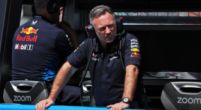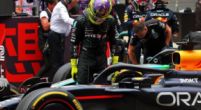F1 News

F1's staffing dilemma as a result of the cost cap pressures
The cost cap has brought about a long-awaited change in the competitive landscape in Formula 1, with hard restrictions now being applied on every team, every season, as to how much they can spend on competitive improvements. However, one area which hasn't been considered by many is the effects on staff from these changes. We take a look at the change in the landscape after McLaren signed Rob Marshall from Red Bull Racing.
The cost cap
The cost cap was brought into F1 at the beginning of the 2021 season in an effort to reduce the exponential differences in expenditures through the teams. Immediately met with support from the fans and discomfort from the teams, the FIA and F1 management had to take time in slowly coaxing all ten teams to agree to the new change in the sport and competitive direction. It also came at a great benefit to F1’s commercial interest, as now prospective teams had a visible and definitive upper limit to their expenditure outlined to them.
Since then, we have seen the effect of the cost cap most significantly on the car developments up and down the grid. More money-saving behaviours, such as debris and wreckage recovery, have been increased in order to prevent part wastage. Team principals have also been hinting at how the result of on-track incidents and the replacement of damaged parts can damage the amount of money funnelled into research and development for the current and future generations of the car.
Importance of staff
As is said in the world of business, the most expensive resource for any corporation is the personnel. Skill building and information retention are crucial areas of management for human resource management departments as they seek to sustain and build productivity levels. In the meantime, personal circumstances and morale are far more nuanced levels of “man management” in any business. These are all time-consuming (and thus costly) areas for a business to take care of without even taking into consideration remuneration packages, holidays and so on.
The world of F1 is not immune to this sort of work. While the main human resources that we may see are the drivers, there are hundreds of members in each team, be it at the track or the headquarters, all requiring individual management in order to bring out the best in them. Teams like Aston Martin have recognised the importance of this, upscaling their workforce and soon bringing them into their new state-of-the-art headquarters. Toto Wolff of Mercedes has noted methods of “man management” such as the importance of talking one-on-one with people and establishing a culture of “owning up to one’s mistake” without blame.
The future
Only a handful of areas are exempt from the jurisdiction of the cost cap: driver salaries, wages for the three highest earners of the team and other non-competitive areas of expenditure. Every single other resource falls under the jurisdiction of the cost cap. With the growth and commercial success of F1 as a whole (and subsequently the teams), we may see more teams reach the cost cap limit of $135 million and therefore become more concerned at how they are spending their limited funds each season.
High-level personnel, such as technical directors or race strategists, may become key figures in offseason transfers, as teams may look for certain design philosophies and reputations to guide them further up the grid. While some are eager to pry out talent and knowledge from other teams, eventually, we may see a state where teams will have to take an even more measured approach as to how they bring in talent. This could potentially make the F1 teams a far more restricted employment field, with teams not willing to take the gamble of losing current members for potential improvements. In other cases, this could also lead to earlier contract terminations and payouts, as teams may be more desperate to find the right option or stay well within the bounds of the regulations.
As Red Bull Team Principal Christian Horner said in a press event attended by GPblog: "The problem is, is that, you know, you have longstanding personnel that have contributed a significant amount that you don't want to see forced out of their roles because of the cap," stating that they have already made redundancies as "we couldn't justify a role within the cap".
On the other hand, this can lead to a greater blend of talent throughout the paddock. If a team recognises that certain members of personnel are holding higher income levels because of their experience - and recognise a cheaper up-and-coming talent - options can be explored through a chop and change. This can result in far more wizened members of the paddock now being available for lower-level teams with greater cash to spend and who wish to capitalise on the opportunity of bringing in a major figure into their ranks. As such, the cost cap limiting team budgets can allow for more creative employment options to be explored, potentially allowing talent & knowledge to be diffused through the grid over time.
A curious evolution awaits the world of F1 in this area. Time will only tell which teams handle it more effectively than the others.



















































